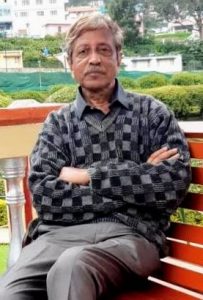
 Last February, I travelled to remote Kerala with my wife. Our destinations were Munroe Island, a real pearl in the backwater region of the Asthamudi Lake, and Varkala Beach in Kollam district.
Last February, I travelled to remote Kerala with my wife. Our destinations were Munroe Island, a real pearl in the backwater region of the Asthamudi Lake, and Varkala Beach in Kollam district.
We boarded the Mysuru-Thiruvananthapuram Express in the afternoon of February 17. I got up early the next day and peeped out of the window. It was still dark but silhouettes of the crude huts, banana plantations and coconut trees could be seen. The train was running in full speed through the plantations.
As the twilight hour came and the crimson sun appeared in the horizon, the scenery changed. The rays penetrated the green cover and the blue backwater on both sides of the railway track sparkled. Around 10 minutes past eight, the train reached Kollam rail station, the gateway to Munroe Island. We still had about 45 minutes, and so, we decided to enjoy a hot cuppa of Kerala coffee.
Munroe Island is an inland island group located at the confluence of the Asthamudi Lake and the Kallada river. Asthamudi is an octopus-shaped waterbody, second only to Lake Vembanad in size. It literally means eight hair braids, indicative of the multiple branches of the lake. It is a major gateway to the Kerala backwater tours.
The history of Munroe Island dates back to mid-1800s during the British rule when Col. John Munroe, the Dewan of Travancore state, granted an isolated island territory to Malankara Missionary Church Society to set up a religious study centre.

We had to get down carefully at Mundrothruthu because the platform was in a dilapidated state after the great tsunami. An auto driver took us to Eternal Isle Inn, a homestay. After enjoying a cup of spicy tea, I called up Vishnu, the owner of the homestay and a very knowledgeable boatman for the canal cruise. He informed me that his uncle Reghu would pick us from the homestay around 4pm. I decided to explore the sleepy village nearby.
Barely five minutes from the homestay, I had the first glimpse of the Kallada to my left. It was a serene beauty. A cool bridge was blowing across the blue water creating small ripples. It was all green on the opposite bank dotted with hundreds of coconut trees. What a refreshing sight! Hardly a soul was seen on the road with occasional foreign tourists cycling past.
I started walking slowly and after a leisurely walk for 45 minutes, came back to the homestay.
After canoeing for about an hour, we came to a vintage point in one corner of the Asthamudi lake where two beautiful arches were formed by the thick growth of mangrove vegetation. Generally, all boats pass through these arches. The sun went down rather quickly and the darkness was descending at a slow pace. We started our journey back along a different route.
At places, the canals are divided into channels through mangroves. After sometime, the boat entered a narrow canal zone. There were houses along the banks. It was dark and an uncanny silence wrapped the entire place. The sound of the splashing of water broke the monotony intermittently. There was occasional flashing of lights from the households. As if we were at the end of the world.
We passed through the canopies formed by the coconut leaves leaning over the canal. It was only 7.30 pm and the hamlet seemed to have plunged into a deep slumber. We walked slowly towards the homestay after a fascinating canal cruise.
The next day, we travelled to Kollam for our next destination, Varkala Beach. The train journey from Kollam to Varkala was a real treat to the eyes. Flanked by backwaters, coconut trees and lovely houses on the low-lying hill around Paravur to our left was a very pleasant sight. From the rail station, an auto driver drove us straight to Kerala Bamboo House. It is a natural ayurvedic health resort offering a number of ayurvedic packages. It is certified by Green Leaf, the highest classification certificate from the Kerala government. This resort is located in a secluded corner of the town.
Barely 200 m from the cliff, there were 40 independent huts with beautiful flower gardens. On the way, we saw a

number of properties offering amenities like spa and Kerala-type ayurvedic massage. Bathed by the blue water of the Arabian Sea and a red cliff, Varkala beach is a real paradise and a beautiful retreat from the bustle of the city life.
Varkala beach is also called Papanasam beach because it is believed that taking a bath here washes away the sins. All tourist activities are along the precipitous cliff where there are a number of gift shops, hotels and restaurants catering to the need of foreign tourists. A very narrow footpath runs along the northern cliff flanked by coconut palms, restaurants, hotels and shacks.
The cliff zone is an attractive place for shoppers and the shops sell handicrafts, colourful apparels, Tibetan handicrafts etc. The buyers are mostly foreigners and I hardly saw Indian tourists there. Along the nice walkway, there are food joints. We enjoyed the tasty food in a restaurant along the cliff line, sat there for some time gazing at the Arabian Sea and returned to the resort.
(The author is former head of the Department of Geography, St. Edmund’s College)
(Click on https://youtu.be/xp-2l-JRlIk for video)





